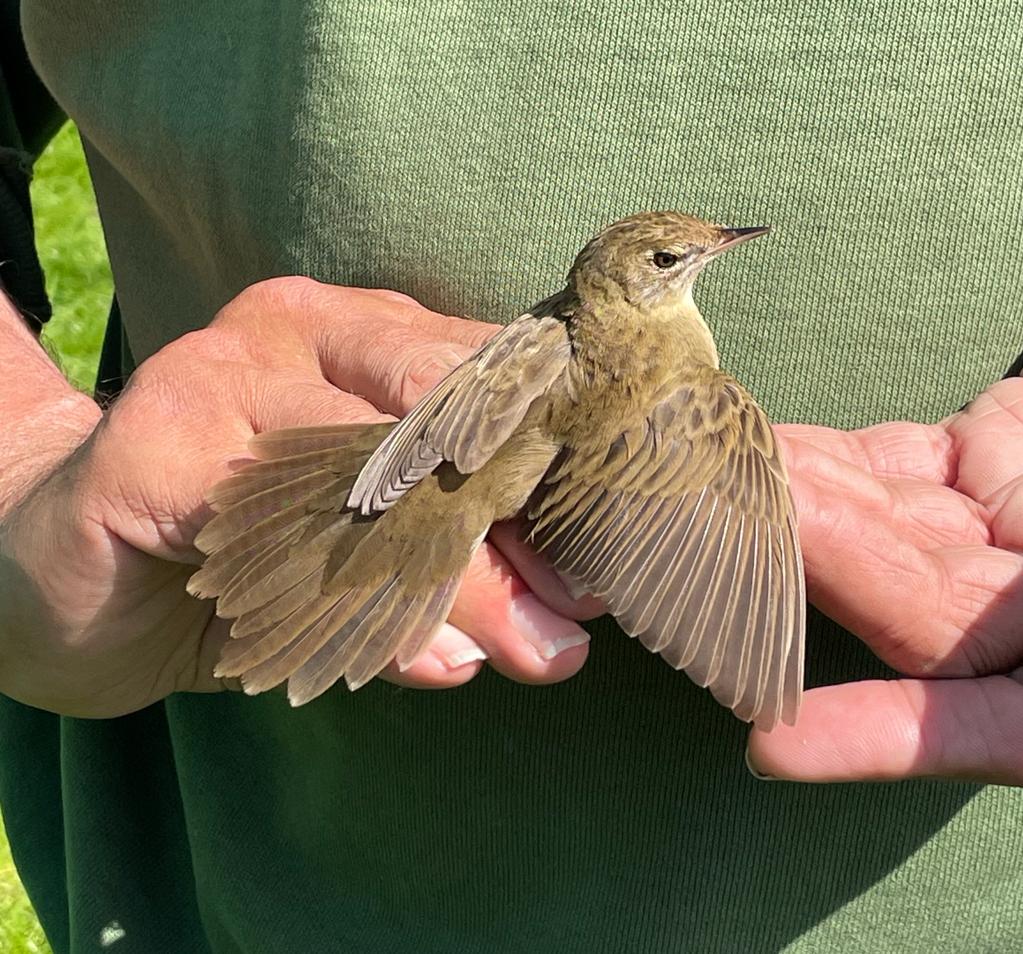Observations
March-April 2023 – two additions to the Rye Meads list

An exciting period at Rye Meads, with some excellent birds to see; but we have to start with our two new species. Sadly we don’t have a photo of either of these.
The 230th species on our list arrived in the shape of a Penduline Tit, which was discovered by Alan Harris in early April when he nosed through the reedbed at the back of the Scrape, showing the value of Ringing Group members able to go ‘off piste’ since it otherwise would have remained undetected. It proved quite hard to see, skulking in distant Typha (bulrushes), but it maintained a presence for most of the day before disappearing into the reeds for good. Tantalisingly it appeared to be ringed, but an attempt to lure it into a net with the aid of a caller proved fruitless.
Less than a fortnight later, the first Rye Meads record of White Stork became our 231st species, seen heading north-west in the early afternoon. Just three days later, what is believed to be the same bird was seen again heading north mid morning. It was unringed, which would suggest a ‘wild’ bird rather than one from the reintroduction programme, and it had plumage characteristics which identified it as a bird touring Herts, Cambs, Northants and Essex this spring.
With all this excitement, it is easy to overlook that it was a period for several other uncommon visitors to Rye Meads that would otherwise be headliners themselves. These included our fifth record of Goshawk, which drifted over high against a brilliant blue sky one morning in late March, and our twelfth Kittiwake record, and only the second involving two birds, in early April.
Other very good sightings included a Sandwich Tern in April (last recorded in 2011, Sandwich Tern has been seen in just twelve previous years going back to 1960, but this is only the fifth Spring record); a Turtle Dove (sad but true that this is only the third bird of the past ten years – a bird once commonly breeding, for which the Rye Meads record count stands at 70, and which has been ringed 78 times here); and the one-legged female Lesser Spotted Woodpecker was seen again, with a drumming male on one date in April.
The usual wildfowl were present, including up to three Shelducks, eight Egyptian Geese, five Red-crested Pochards, 56 Pochards, 110 Gadwalls, 102 Shovelers and 61 Teal. The last of the Snipe and Jack Snipe were superceded by the first of the Little Ringed Plovers, and visits by a Dunlin twice and three Greenshanks were always going to be welcome at this inland site. A single Mediterranean Gull visited in March, with two for a day in April. The first returning Common Terns grew slowly to just five by the end of April.
A female Marsh Harrier was seen a couple of times, and we had the first returning Hobbies. An interesting record was of three Peregrines fighting over the meadow. A couple of Barn Owls seem to have taken up residence.
Spring migration really gets under way in April, and Cuckoo and Swift joined the three Hirundines and all the usual complement of warblers. Interestingly we caught a Grasshopper Warbler which turned out to be one we’d ringed here last year – nice site fidelity there. We had two records of single Yellow Wagtails and a solitary Whinchat.
Meanwhile the winter visitors largely disappeared by the end of March: Fieldfares had gone early on, as had our roosting Yellowhammers, but Redwings just lingered into April, as did Meadow Pipit; whereas a Water Pipit was seen intermittently until mid April.
Lastly for the birds, a note for the small regular flock of half a dozen Linnets lingering throughout, potentially breeders, and the two Bullfinches caught in April – there had been no sightings since last August.
And finally, as they say in all the best news bulletins, one more record count to mention. At least we think it’s a record, it’s a species we record in our logs but don’t analyse, namely Muntjac – no less than ten were counted in the North Lagoons alone in mid April. They are becoming both more numerous and less shy!
For more information on observations and ringing, delivered much more up to date in our bi-monthly Bulletin, why not become a Friend of RMRG?
